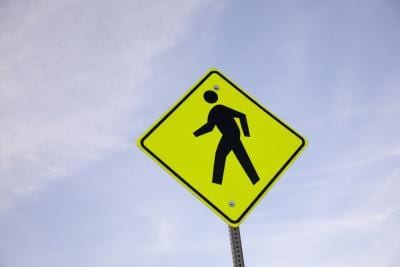Kids and cars can be an explosive combination. If proper precautions are not followed, children can be hurt or killed when acting as pedestrians. As the Safe Kids USA website reports, pedestrian-related injuries are the second largest cause of injury-related death among children. To ensure that your kids are safe while in and around roadways, educate yourself on the dangers that children face as pedestrians and ways in which you can help reduce the likelihood that they suffer a potentially serious injury.
Injury Prevalence
While the task of crossing the street may seem deceptively simple, many children fall victim to injury each year by failing to heed the rules of pedestrian safety. As the Safe Kids USA website reports, in 2007, nearly 27,440 children were treated for pedestrian-related injuries in emergency rooms in the United States. To prevent your child from becoming one of the 3.1 children every hour who are injured while walking, you must both consider your child’s readiness to act as a solo pedestrian and educate your inexperienced kid on the rules of the road.
Child Perceptions
Many children run into trouble while walking not because they don’t know what to do, but instead because they lack the perceptive abilities to take in the world around them properly. As the federal Administration of Children and Family Services reports, many of the perceptual abilities that children need to stay safe as pedestrians are not fully developed until the child reaches the age of 10. These skills including auditory and visual acuity as well as the ability to span depth perception. These developmental facts indicate that, regardless of how responsible your child may be, he is likely not ready to hit the road alone until he is older than 10.
Toy Chasing
Many well-trained children abandon all knowledge and run into harm’s way when chasing run-away balls or other toys. Even though the most careful training cannot necessarily prevent this impulsive reaction, you should speak specifically to your children about this situation. Explain to your kids that they need to exercise caution around roads at all times, reminding them that there is always time to look both ways before trying to catch a run-away toy. To prevent your impulsive child from venturing the path of a car, have her play in the backyard, well away from roads, whenever possible.
School Bus Street Crossing
School children are often charged with the task of crossing the road when getting on or leaving the bus. To ensure that your child can complete this task safely, train him on the specifics of bus-related road crossing. As the federal Department of Children and Family Services suggests, tell your child that he should only cross in front of the school bus and never behind. Tell him he should wait until the bus driver indicates that it is safe to cross by turning on his lights and putting out his safety stop sign. When your kids are small, it is wise to cross with them to ensure that they remain safe as they venture off or return home from school.
Practice Makes Perfect
There is no such thing as practicing pedestrian safety too much. Following the rules that govern safe road crossing could be a matter of life and death for your child. Turn every road crossing into a practice session, asking your child to stop and look both ways and instructing him to give you the go ahead when he thinks the road appears safe for crossing. Each time you practice this simple drill, your child will further ingrain the practice into his brain and become an even better road crosser.





